You know it, everyone knows it: one day in Rome is not enough. But, if that’s all you have, so be it. Rome wasn’t built in a day, but in 24 hours you can see some of the most iconic sights that the Eternal City has to offer. It’s ambitious, but not impossible. You can do it on your own, of course, or let someone else do all the planning.
A palimpsest is defined as:
- A parchment or the like from which writing has been partially or completely erased to make room for another text.
- Something that has a new layer, aspect, or appearance that builds on its past and allows us to see or perceive parts of this past.
If you want to see a physical embodiment of this, just point yourself to Rome, the Italian capital, and the metropolis that has been churning out empires, isms, architectural and art styles, fashions, even the way we keep time—among a book-length list of other influences—for the last 2,500 years.
Stroll around this city and you’ll see evidence of centuries past, built upon each other, layer by layer, like a giant inedible lasagna.
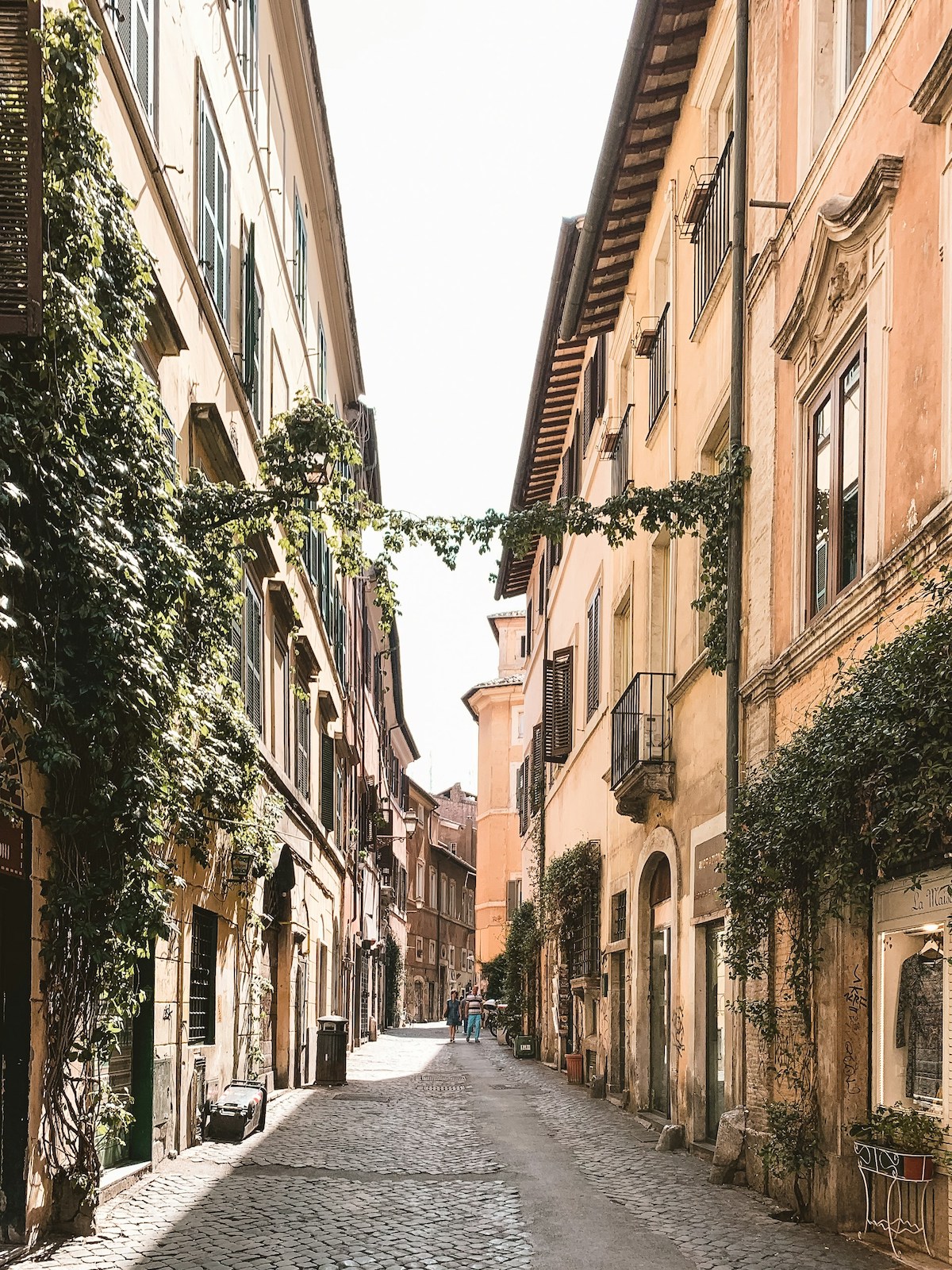
Early morning in Rome: Sip a high-quality espresso while staring antiquity right in the eye
Start your day smack in the center of Rome, right in the belly of the beast at Piazza della Rotonda. You’ll be standing in front of one of the world’s greatest remnants of antiquity: the Pantheon. But, before going inside, head over to La Tazza d’Oro (Via degli Orfani, 84).
This bustling coffee bar has been pulling perfect shots of espresso since 1946. This isn’t just an ordinary Roman coffee bar, though; it’s a torrefazione. They roast their own coffee beans here, so you’ll get a cup that’s as unique as the spot you’re sipping it in.
Be like a real Roman: pay for your espresso (and perhaps a croissant—or cornetto, in the local parlance) at the register, hand your receipt to the barista, and then stand at the bar while sipping away and nibbling on that flaky baked good.
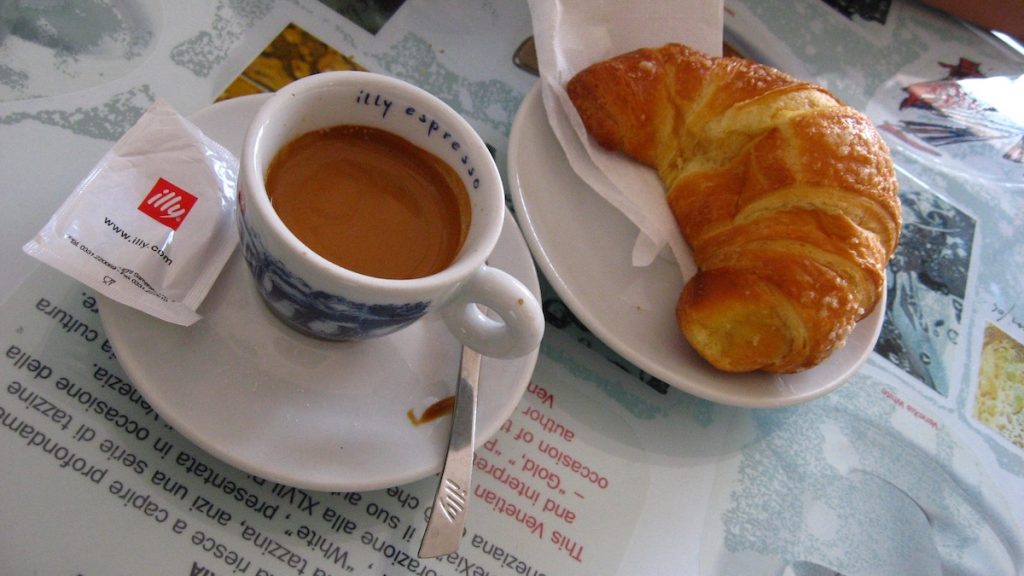
After your coffee, stroll over to the Pantheon, the “temple of all gods,” a majestic domed structure. There’s been much historical controversy over when the structure arose, especially since it states on the pediment that Emperor Agrippa had it built.
The most recent scholarly consensus is that, while Agrippa in the first century B.C.E. had built a temple here, Emperor Hadrian built it in its most recent form in the early second century B.C.E., about 150 years after Agrippa.
The Pantheon is the resting places of various famous Italians, including the painter Raphael, but the real spectacle is looking up the dome.
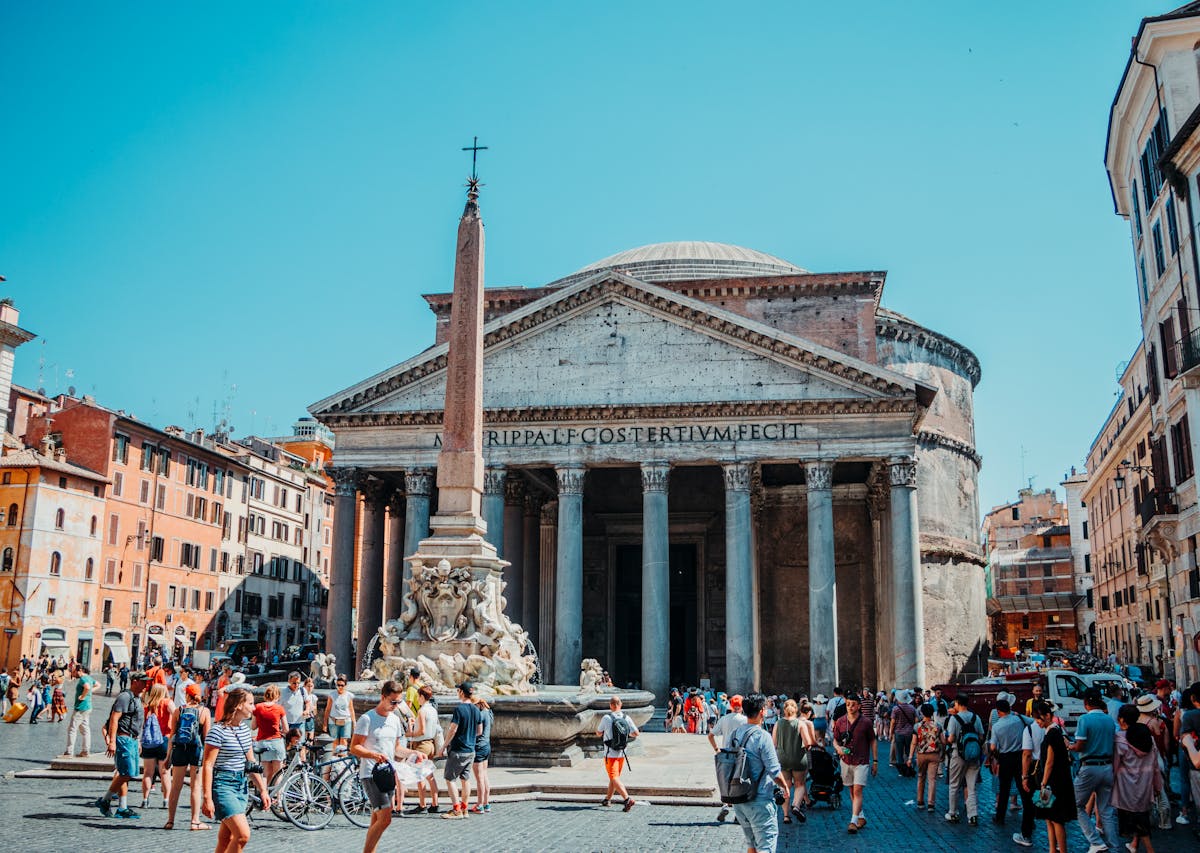
Late morning in Rome: Perambulating the piazzas
Just 10-minute or so amble through the streets or Rome and you’ll be at one of the world’s great public spaces: Piazza Navona. This oblong-shaped square gets its form from the fact that in ancient Roman times the space was a circus—though, not the kind of “circus” that 21st-century humans would think of. It was a race track for athletic competitions. In the year 86 C.E., Emperor Domitian had it created and it could hold up to 20,000 spectators.
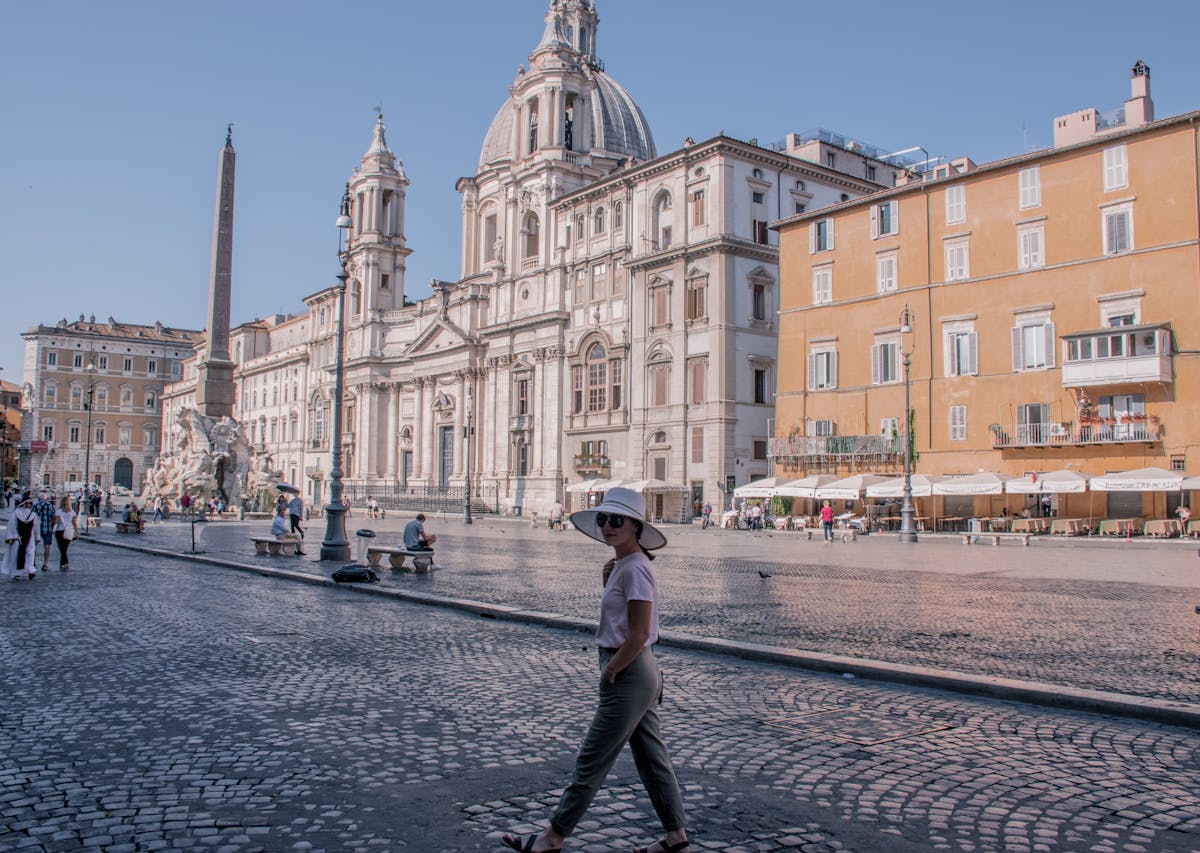
Piazza Navona
Today, Piazza Navona has plenty of outdoor cafés that invite locals and visitors alike to pull up a chair for some major league people watching.
The square has several eye-popping fountains. The centerpiece (both literally and figuratively) is Bernini’s masterpiece, “La Fontana dei Quattro Fiumi.”
It is a fountain dedicated to what was considered the world’s four great rivers in the middle of the 17th century—the Nile, the Danube, the Ganges, and the Río de la Plata in South America.
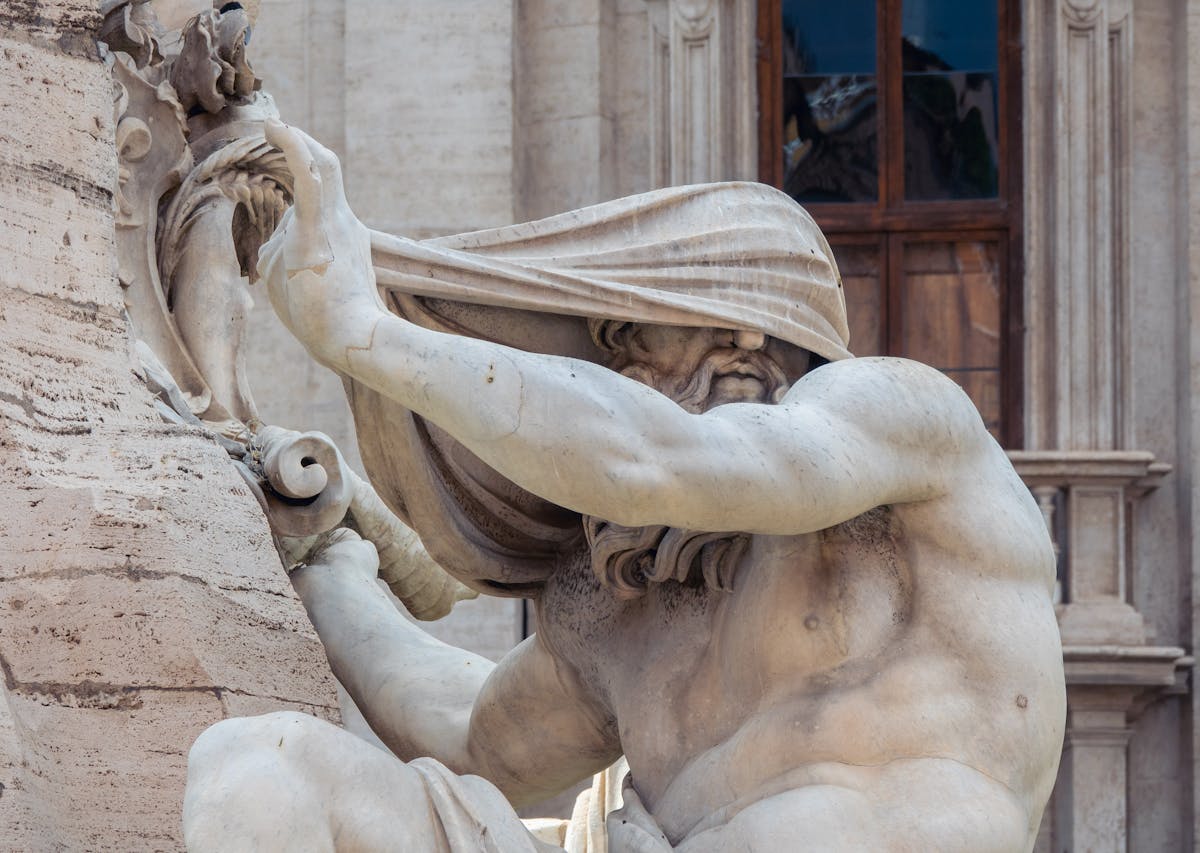
Campo dei Fiori
If you have time, walk south about five minutes, crossing the sometimes busy Corso Vittorio Emanuele II, until you reach the Campo dei Fiori. This intimate square feels less planned than Piazza Navona. It doubles as the main farmers market in Rome’s historical center.
Today, though, souvenir stands have replaced many of the vegetable and fruit sellers. It’s still one of the most inviting squares in the city.
And that hooded Darth Vader-looking statue on the pedestal in the center of the square? He comes with an intriguing story. That’s Giordano Bruno, who got on the Pope’s bad side in the late 16th century for saying things such as the universe was so vast it didn’t have a center or that the stars were actually distant suns surrounded by planets. As a result of such “heresies,” the Church had him burned at the stake right here in this square.
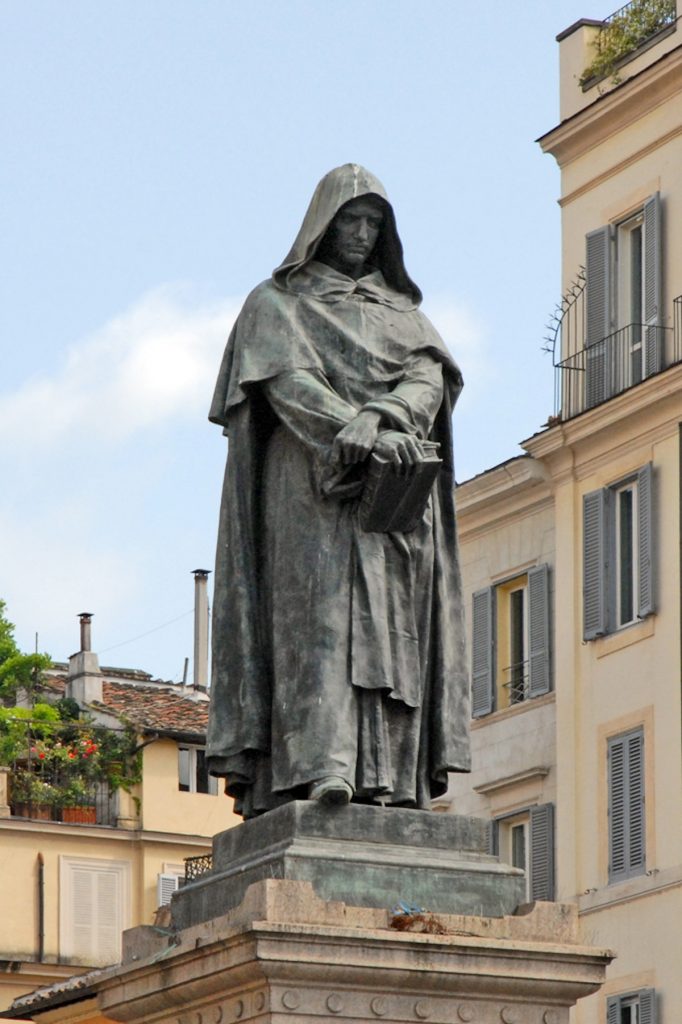
Fast forward about 400 years later when the newly-created Italian state was at odds with the Vatican and a series of passive-aggressive urban planning took place, naming streets just outside of the borders of the truncated Vatican state after Church dissidents and heroes who helped unite Italy (much to the Church’s dissent).
In 1889, the city of Rome erected this statue in the exact place where the Church burned him. It’s no coincidence which direction the somber sculpture is facing: straight at the dome of St. Peter’s Basilica.
Which, ironically enough, the basilica was intentionally built on the site of where St. Peter was crucified by the Romans for defying the status quo of the ruling hegemony at the time.
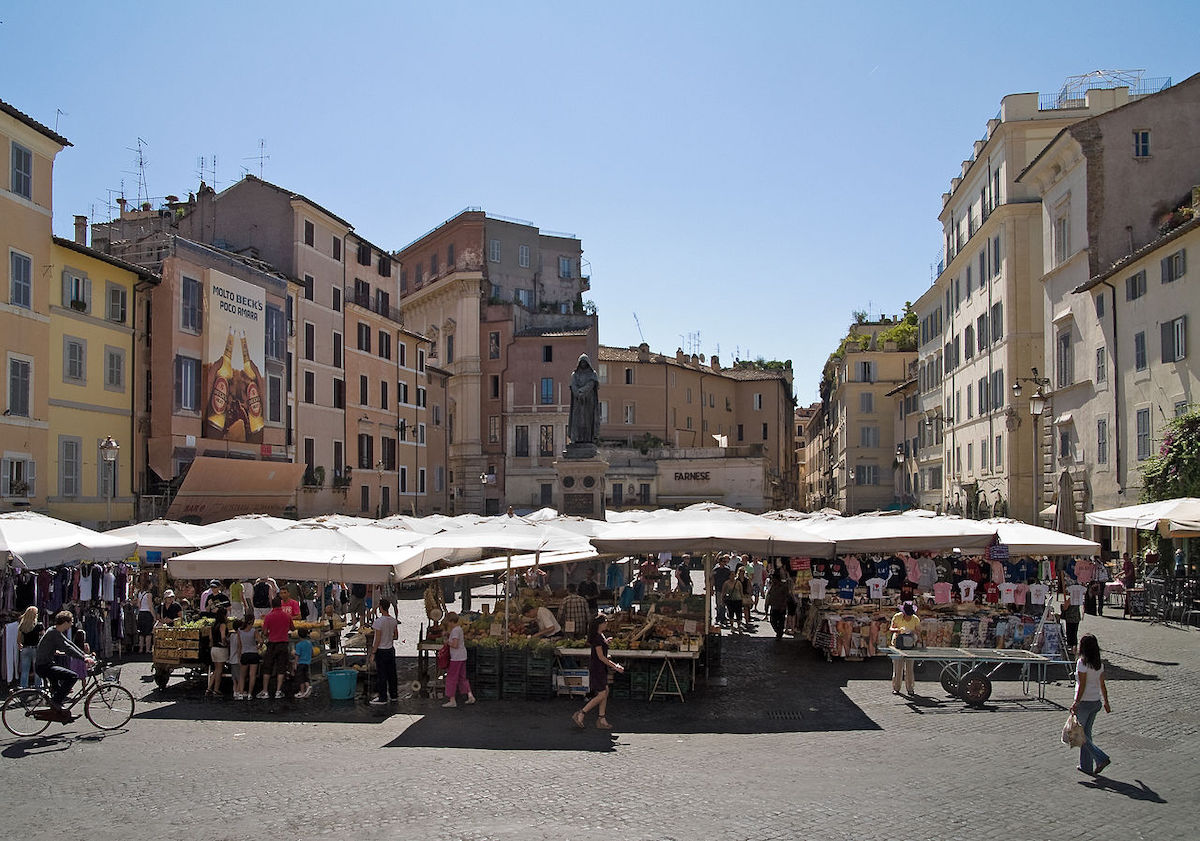
Early afternoon in Rome: The Vatican
Speaking of the Vatican, it’s time to head there. This 108-acre city-state is one of the chief sites to see if you only have a limited time here. It’s too much to ask of anyone with one day in Rome to attempt visiting the Vatican Museums.
Post-pandemic Rome is crammed with visitors who are eager to queue up in long lines to get into museums and other attractions. On another visit to Rome, you can get early access to the Vatican so you won’t have to wait in any lines.
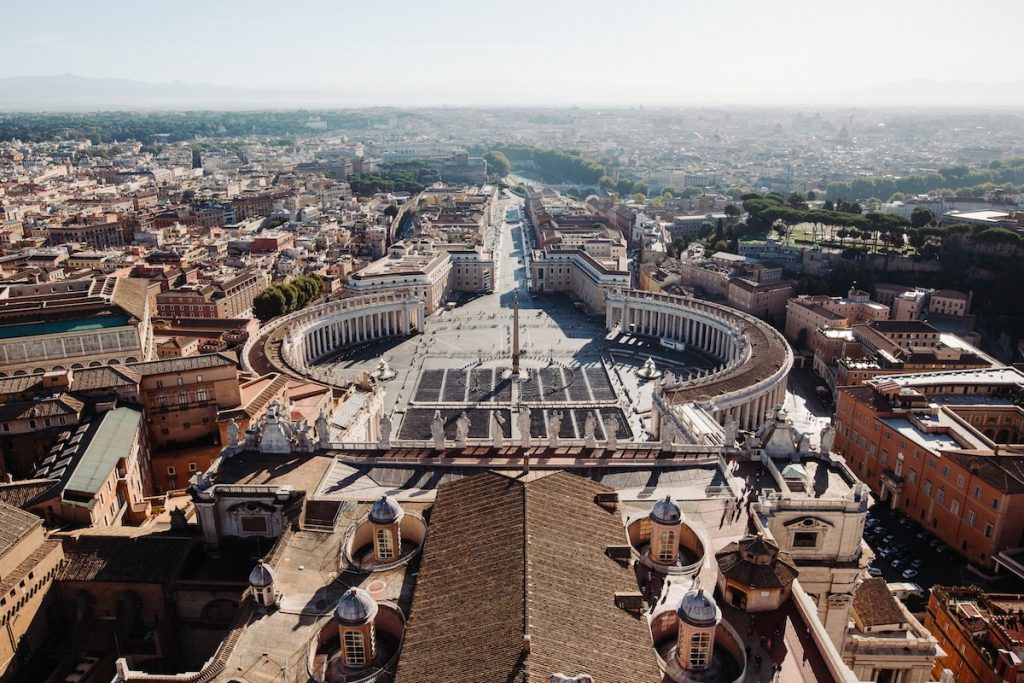
For now, though, we suggest that you spend your time wandering around grandiose St. Peter’s Square, the two arms of colonnades—complete with 284 columns—reaching out to embrace each and every visitor, while you gawk at Michelangelo’s dome for St. Peter’s Basilica. After all, if you had unlimited time, you could spend days, weeks, exploring the Vatican.
There’s often a security line to get into St. Peter’s. It’s worth the wait and it goes quicker than you think. The Basilica of St. Peter, the architectural cherry crowning Vatican City, was completed in the early 17th century, exactly 1,300 years after the first St. Peter’s was completed on this site.
An all-star team of legendary Renaissance and Baroque architects and artists gave a hand in building the “new” St. Peters, including Bramante, Michelangelo, Raphael, and Bernini.
You shouldn’t miss interior highlights such as Michelangelo’s “Pieta” and Bernini’s monumental brass “Baldacchino,” a 100-foot tall “canopy” that serves as the focal point of the church. Most of the brass, by the way, came from the roof of the Pantheon. A lot of the marble? From the Colosseum.
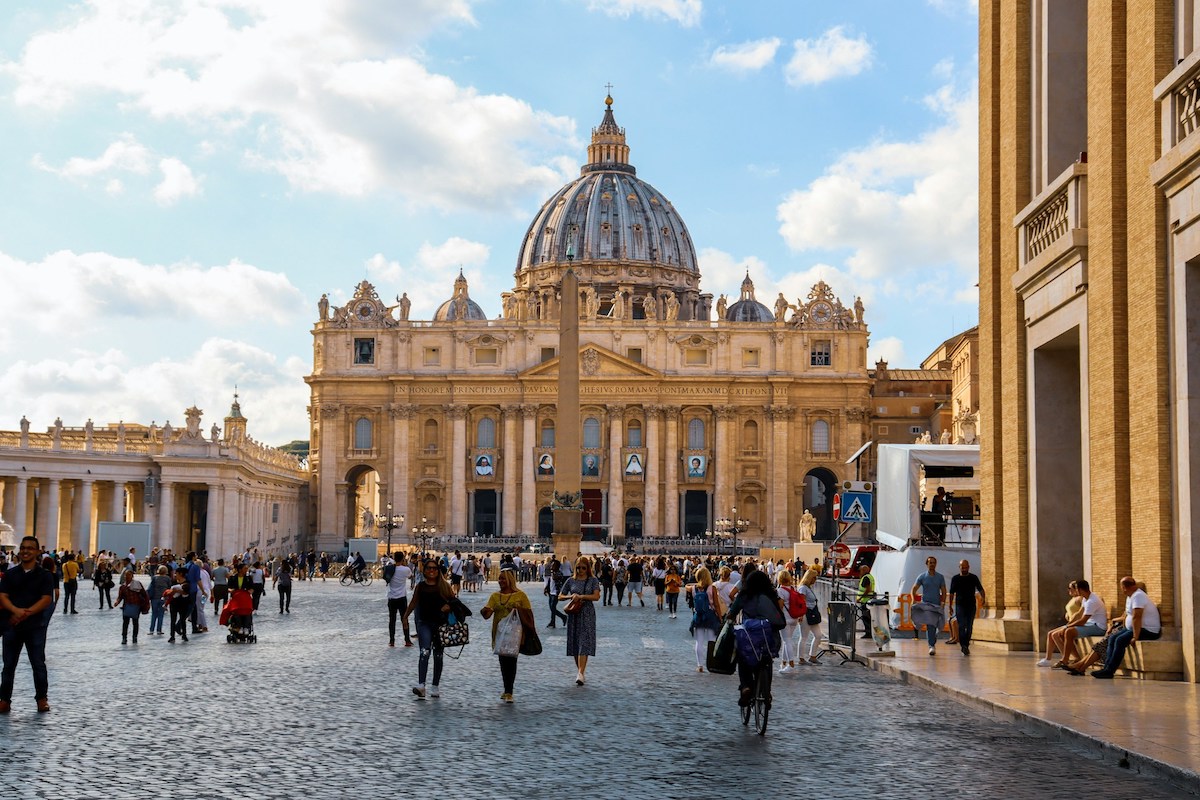
Late afternoon in Rome: Back to antiquity at the Colosseum and the Forum
It’s time to take another dip back into antiquity. The quickest way to do that is by taking the Metro. You’ll feel like you’re taking a time machine from the Renaissance back to the Roman Empire. From the Vatican, hop on the Metro at Anagnina station and take line Termini. Change to the B line (toward Laurentina) and exit the Metro at Colosseo.
This ruin-studded swath of land that is the Roman Forum was the very center of Roman power for centuries. You could find temples, courthouses and administrative buildings there.
After the fall of the empire in the 5th century C.E., it served as a quarry for marble, which is why today it’s just marble stumps of its former self.
There is still plenty to see, though. Marble arches, such as the arch of Titus, commemorating the 1st century C.E. sack on Jerusalem, and standing columns from various temples, create an atmospheric stroll throughout what once was the center of the known world.
The line might be too long to get into the Colosseum if you only have one day in Rome. Of course, there are ways to circumvent that long line, like this Premium Colosseum tour. The good news is that seeing this nearly 2,000-year-old iconic structure from the outside is extremely satisfying.
In its prime, this stadium could hold over 70,000 Romans. In the first 100 days of the stadium’s inauguration, 5,000 beasts were slaughtered, to the enjoyment of the masses. Thanks to its ingenious design and the many “vomitoria,” or exits, the Colosseum could be emptied within 10 minutes.
All the fun ended with the fall of the Roman Empire. By the Middle Ages, it was simply a quarry for marble.
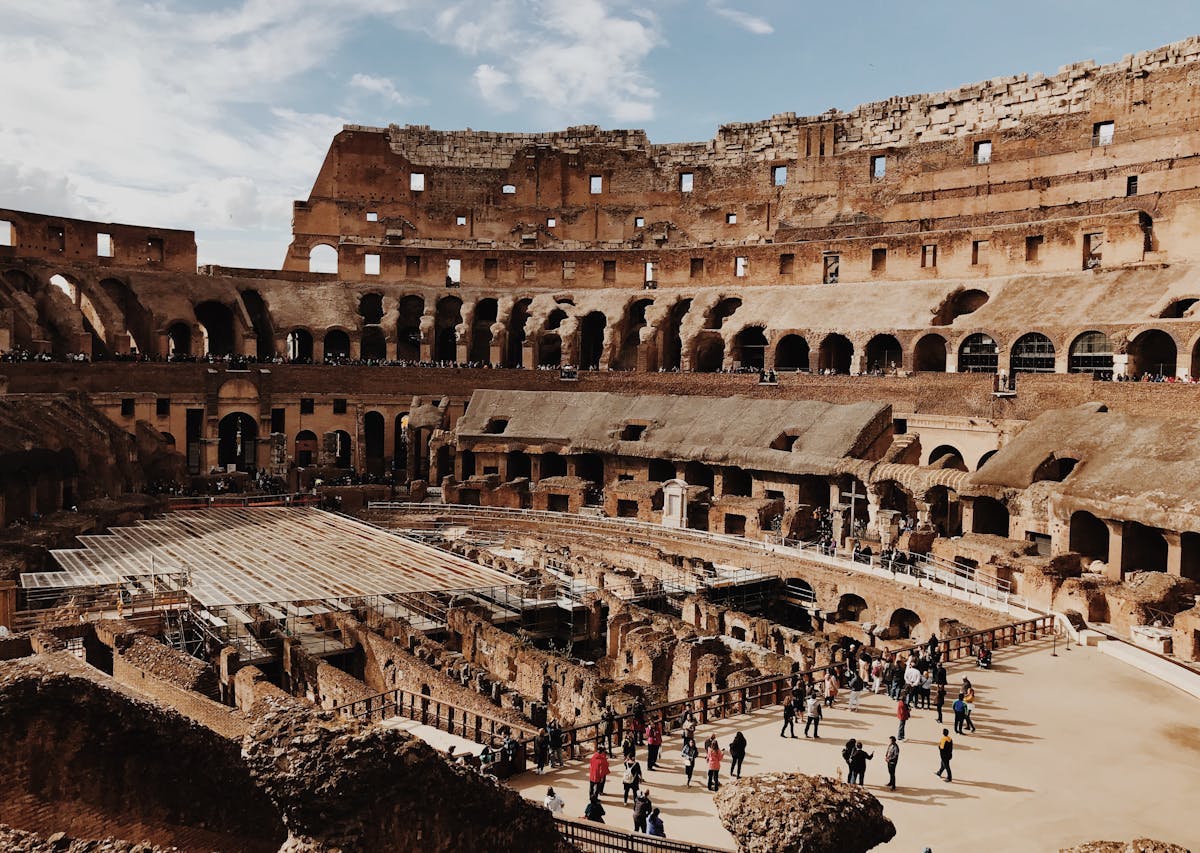
Evening in Rome: The nighttime splendor of Trastevere
Ask a Roman to name a favorite neighborhood in the center of town and you’re likely to hear Trastevere. This neighborhood, beloved for its charm and timelessness, literally means “across the Tiber.”
The winding, narrow lanes have plenty of discrete wine bars and outdoor cafes, and a plethora of restaurants. In a future visit, consider exploring the food scene of Rome, especially in the nearby Jewish Quarter.

If you get here in time for some sightseeing, there are a few not-to-be-missed places. Pop into the church of Santa María in Trastevere. It’s said to be the first official place of worship for Christians in Rome. Also, the church San Francesco a Ripa, which houses one of Bernini’s most breathtaking sculptures, “Estasi della beata Ludovica Albertoni.”
If not, though, there’s plenty of fun leisure in Trastevere. You can wander its curvy narrow streets, enjoy a glass of wine, or get dinner.
There are plenty of great restaurants to choose from. You have the no-frills Trattoria da Augusto (Vicolo de’ Renzi, 15), where they add up your bill on the paper covering that acts as a tablecloth.
Another option is the classic trattoria Da Enzo al 29. Here you can get one of the best versions of the Roman staple, carbonara.
A third option is the Michelin-starred Glass Hostaria. Chef Cristina Bowerman puts her stamp on a menu of Southern-meets-Central Italian fusion fare.
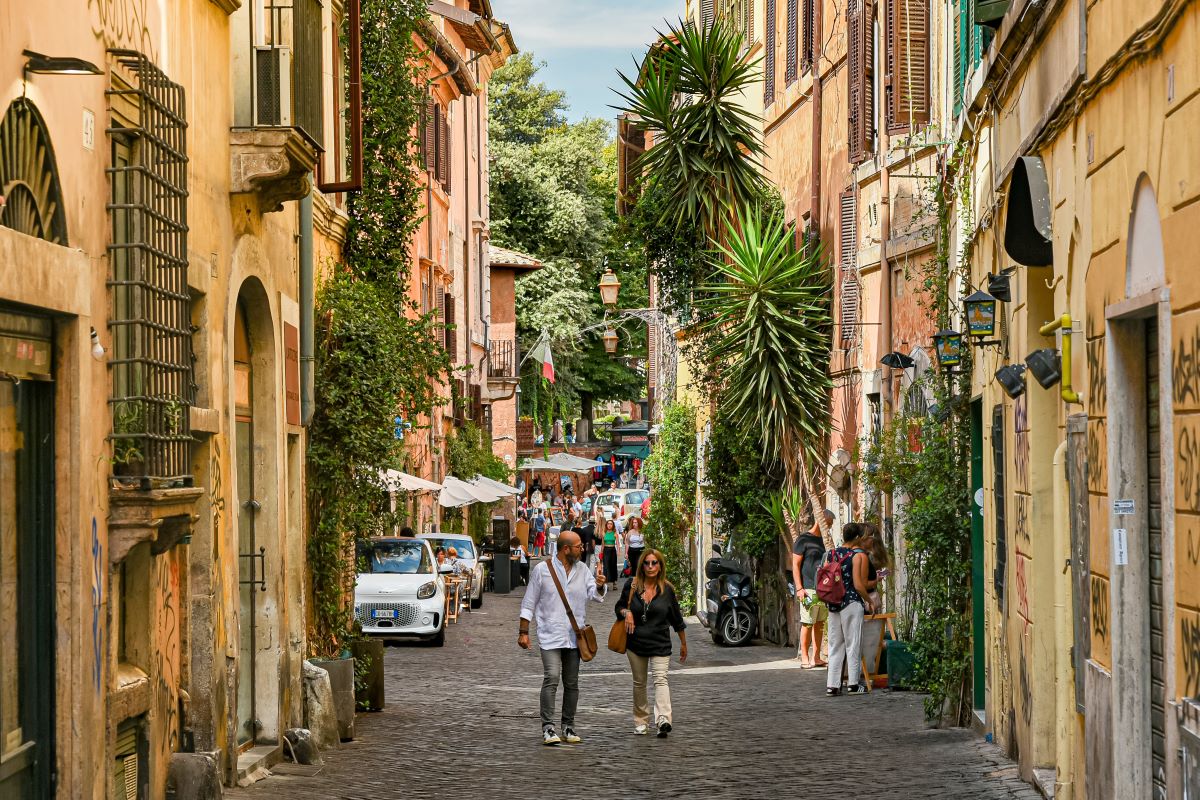
If you want something more organized to close off your day in Rome, consider a guided tour of Trastevere’s best restaurants and wine bars at sunset. Taste Roman essentials while eating and drinking like a true local, soaking up in Trastevere’s energetic evening ambiance. Join us!

